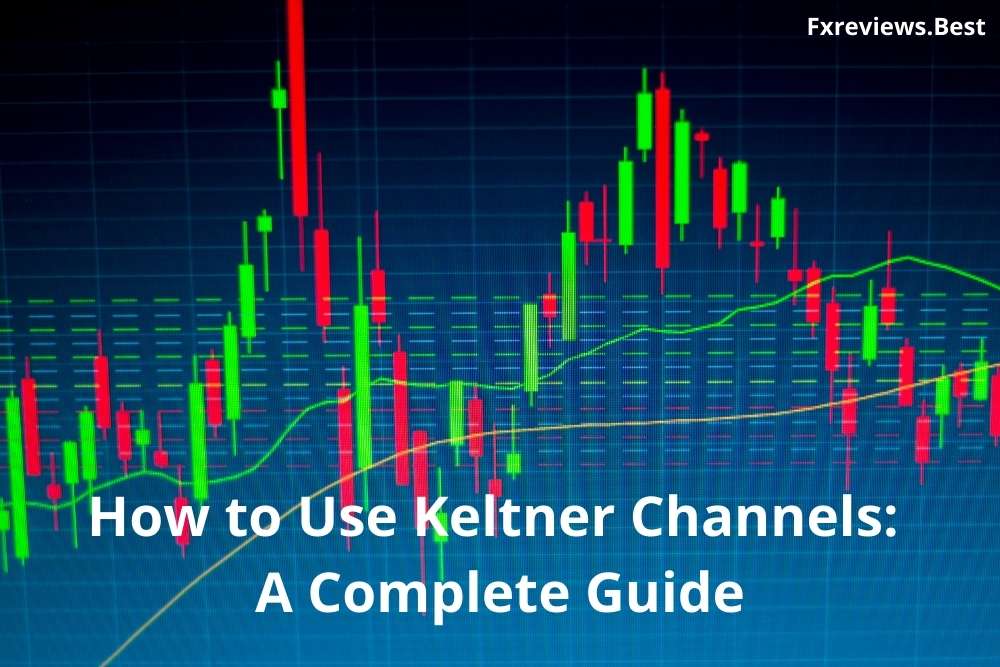A technical indicator is an essential tool for conducting a technical analysis. There are several technical indicators available that are helpful to identify and exit points while trading. One of them is Keltner Channel technical indicator. The Keltner channel is mainly popular among day traders because this indicator is quite a unique tool that gives valuable insights for intraday trading.
In this article, we will discuss Keltner Channels profoundly and how to use them.
How do Keltner Channels work?
The Keltner Channel indicator is one of the envelop indicator family of technical analysis tools. A Keltner bands approach can be a very effective tool in a technical trader’s toolbox. Envelop indicators can help establish upper resistance and lower support levels regardless of whether the asset is trading upwards, downwards, or sideways.
The key to establishing a successful Keltner band trading strategy is understanding how to use a Keltner channel trading strategy effectively based on the asset’s price movement and market environment. Enveloped indicators, such as the Keltner channel, use one lower and one higher band to build a dynamic channel around a financial instrument’s price range.
The following formula can be used to summarise the Keltner channel calculation:
Upper Channel = 20-Period EMA Value + Multiplied Value of ATR.
Middle Band = 20-Period EMA Value.
Lower Channel = 20-Period EMA Value – Multiplied Value of ATR.
where, EMA = Exponential Moving Average
ATR = Average True Range
What is the idea of Keltner channels?
Keltner channel, like other envelop-based technical indicators, has advantages and disadvantages. For example, to draw an mt4 Keltner channel, you can use a Keltner channel indicator created by a third party. The Keltner channel indicator is available for download in multiple versions at the MQL4 Programming Forum, the official MetaTrader 4 platform forum.
It’s worth noting that the popular Forex charting software MetaTrader 4 platform does not have a built-in indicator for calculating Keltner channels as of this writing.
Additionally, you can also customize the Keltner channel indicator with a number of famous Forex brokers, such as ABinvesting. However, take the time to learn the formula underlying the signal and combine it with other technical indicators to create a trading strategy that works in a variety of market scenarios. Such trading systems can help you make money. Read our ABInvesting Review.
How to use Keltner Channels?
Adjust the Keltner Channel appropriately
When an asset is going higher in a trend direction, its price should regularly reach or approach the upper band and occasionally move past it. Your channels may be too close, and you should increase the multiplier if the price continues to trend higher while frequently touching the lower band.
When an asset is going lower, it should reach or come near to the lower band on a frequent basis and occasionally even move past it. Keltner Channels are useful because they can help to highlight a pattern. To put it another way, if the price keeps rising but never reaches the upper band, your channels may be too wide, and you should reduce the multiplier.
The indication should be set up in such a way that these recommendations are followed the majority of the time. The price should also stay above the bottom band and will frequently remain above or barely dip below the middle line.
Your indication must be calibrated correctly in order to assist you in market analysis. The price should also remain below the upper band and will frequently stay below or barely push above the middle band. If it isn’t, the trading recommendations will be invalidated, and the indicator will be useless.
The Breakout Strategy
The Keltner Channel breakout technique tries to catch large swings that the trend-pullback approach can miss. In the first 30 minutes, only take two trade signals for this method. However, attempting to employ this approach on an asset that does not experience rapid and dramatic morning moves will result in a large number of loss trades because the price is unlikely to continue running after the breakout and will instead reverse.
After the first 30 minutes of the market opening, the basic strategy is to purchase if the price breaks above the upper band and sell short if the price falls below the lower band. Then, near a significant market open, the breakout approach should be implemented. This method benefits from the most explosive movement at that time.
The exit is located in the middle band. This trade does not have a profit target. Whether the trade is a winner or a loser, exit the deal when the middle band is touched.
Because the market is often volatile immediately after the open, you may receive one indication that results in a loss or a little profit, followed by another signal. Also, trade the second signal. If a significant move does not occur on the first two-channel breakouts, it is unlikely to occur.
This method works best with assets that have strong morning trending movements. However, if you find that an asset is fairly sedentary and rarely moves, this is not the strategy for that asset.
The Trend-Pullback Strategy
When the indicator is properly set up, the basic idea is to purchase when the price pulls back to the middle line during an uptrend. This provides additional trading space and, presumably, reduces the number of losing trades.
Alternatively, if you discover that the price is frequently hitting your stop loss, you can shift it closer to the lower band. For example, place a stop loss between the middle and lower bands and a target price around the upper band.
When the price reaches the middle line during a downturn, sell short. A short sale is when you sell a borrowed asset in the hopes of repurchasing it and returning it at a lower price. You can shift your stop loss closer to the upper band if the price is frequently hitting your stop loss and you have previously modified your indication to follow the rules.
This strategy will also be ineffective if the price fluctuates between hitting the upper and lower bands. Place a stop loss in the middle of the middle and upper bands and a target in the lower band. When a trend isn’t present, this strategy isn’t effective.
It is not necessary to trade all pullbacks to the middle band. Because the stop loss point is around half the target price length, this technique takes advantage of the trending tendency and gives trades with an approximate 0.5 risk-reward ratio. Always check to see if the market is following the trading guidelines’ pattern; if it isn’t, don’t employ this technique.
Combination of Breakout and Trend-PullbackStrategies
The Keltner Channel day trading breakout method is intended for usage just before a major market opens and only in assets that tend to move sharply and consistently at that time. For example, when employing the trend-pullback approach, if there were large changes in the morning, but the price flattens out and trades in a very tight price range during the day, the breakout technique may become beneficial once more.
If you have a morning breakout strategy trade, it will expire whenever the price reaches the middle band. The trend-pullback approach is more beneficial throughout the day, and the strategy’s only criterion is that a trend that meets the rules occurs. You can then determine whether you wish to trade again utilizing the trend-pullback approach.
The price will not give excellent trend trades if it is tightly compacted, but if the price was turbulent earlier in the day, some of that volatility might reappear. You can then determine whether the trend is strong enough to support another trend-pullback entry.
The same exit conditions apply when utilizing the breakout method during the day; exit when the price touches the middle band. For these methods, not all trade indications should be followed. However, when the conditions are ideal for each scenario, it tends to function well.
While both of these methods give entries and exits, it is a subjective approach in that the trader must decide when to use each strategy and which trades to make. To suggest trade and a likely return to more significant trending swings, look for a breakout above or below the upper or lower range.
Please take proper cautions
You should only contemplate trading with real money if you have been consistently successful over a few practice sessions. If you trade a variety of assets, you may need to tweak your Keltner Channel settings slightly.
Before trading with real money using Keltner Channels, try trading on the indicator’s signals in a demo account. Make it a habit to decide which deals to take and which to pass up. The calibration you use on one asset may or may not function or be the optimum setting for another.
Bottom Line
Keltner channel is one of the most underrated technical indicators out there. Using it appropriately, you can generate remarkably higher returns on your investments with this tremendous technical indicator. Just keep learning about Keltner Channels and furnish your skills the indicator properly.
You can trade with Keltner Channel with a highly reputed brokerage firm ABinvesting. The broker is known for providing the best trading environment to each kind of trader. Open Demo Account with ABInvesting.
FAQs
1. What is the shift in Keltner Channel?
In Keltner Channels, the shift represents the total number of Average True Ranges (ATRs) over the moving average (MA), as well as below it.
2. Which is better Bollinger Bands or Keltner Channels?
The Keltner Channel is a trailing on-chart indicator that employs a mix of exponential moving averages and ATR as inputs. Two inputs are used to customise the Keltner Channel indication. One is the exponential moving average’s length, and the other one is the multiplier you want to use with the ATR.
Unlike Bollinger Bands, which utilise standard deviations to define channel width, Keltner Channels employ an exponential moving average and an ATR multiplier to establish upper and lower bands.
Both can be better than the other one for different traders. It depends on traders’ perspectives as they have different risk appetites and trading experiences.
3. How does Excel calculate Keltner Channel?
Excel can easily calculate Keltner Channels as it does any other calculation. You just have to put the values and assign the formula of Keltner Channels calculation.
The formula is:
Upper Channel = 20-Period EMA Value + Multiplied Value of ATR.
Middle Band = 20-Period EMA Value.
Lower Channel = 20-Period EMA Value – Multiplied Value of ATR.
where, EMA = Exponential Moving Average
ATR = Average True Range
4. What is Envelop in Keltner Channels?
Envelop is a category of technical indicators. It contains many technical tools. The Keltner Channel indicator also belongs to the category of Envelop indicators.


